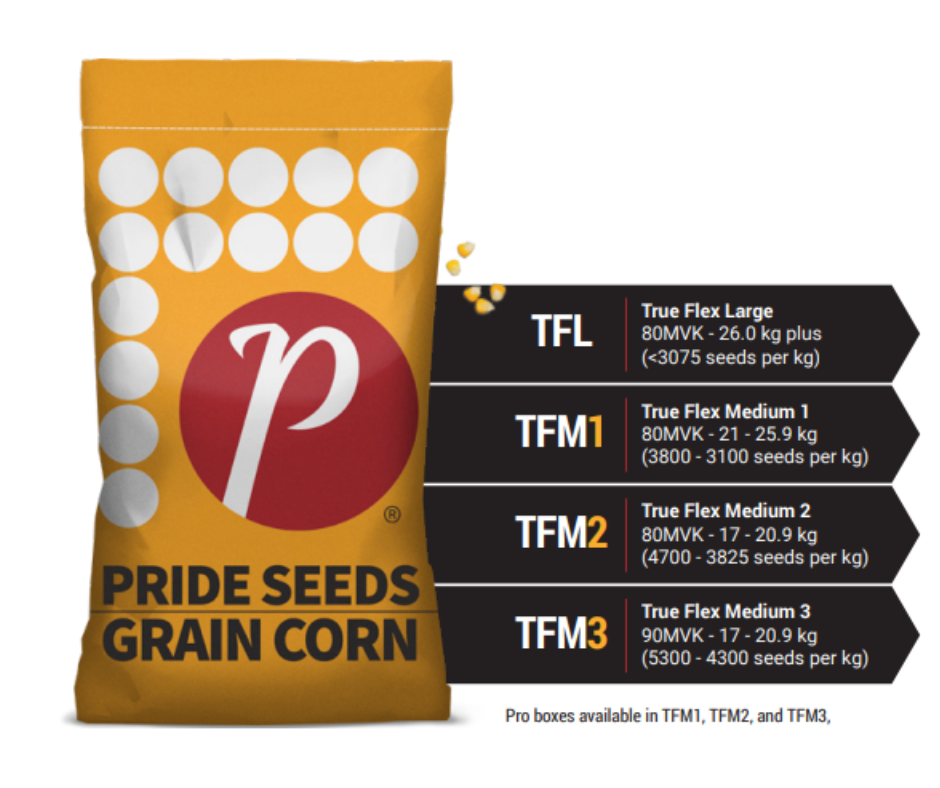Archives
Recent Posts
-
Mar3Fri
The Impact of Corn Seed Size and Potential
March 3, 2023 Olivia Noorenberghe- Filed Under:
- Corn, Crop Management, Planting, Silage
Seed corn kernels can come in a variety of sizes and shapes ranging from either large rounds (kernels from the base of the ear), flats (from the center of the ear), and small rounds (from the tip of the ear).
Regardless of kernel size or shape, all seeds have the same genetic material and yield potential. And while genetic potential determines corn yield potential, a variety of other management practices and stress throughout the growing season also have a large impact on yield. For example, it is important that we are planting into a well-prepared seed bed, at the proper seed depth, with a suitable soil temperature and moisture and with adequate soil fertility in order to give each seed the best chance to grow to its maximum yield potential.
In a study conducted by Iowa State University, it was found that after tasseling, there were no differences in rate of growth and yield potential regardless of kernel size. This study found that it was more important to obtain a uniform and optimum plant population, which emphasizes the importance of optimal planting conditions and not subjecting the seed to stress early in development. One thing to note is that this study did observe that early growth and emergence can be affected by seed size and shape. For example, in cooler or crusted soils small seeds may not emerge as well because they have a smaller energy reserve. Therefore, if smaller seeds are planted in cool, wet conditions it may be beneficial to increase the planting rate to compensate for this.

When properly managed, corn seed size of any size and weight can produce a successful crop. So how do we adjust for different seed sizes at planting?
- Adjust planter settings based on seed size and shape to ensure accurate seed positioning, placement and seeding rate. This allows for the planter to correctly singulate the seed and avoid excessive doubles or skips which can reduce grain yield bu 3 to 10 bushels per acre2.
- Wait to plant until soil conditions (temperature and moisture) are adequate and will promote quick germination and seedling growth.
- Know your soil! Understand how soil type and conditions can affect seedling emergence and early growth. Adjust seeding rate accordingly.
Pride has four different corn seed sizes: TFL, TFM1, TFM2 and TFM3 and all possess the exact same genetic and yield potential. There may even be an advantage to a grower when they select the smaller seed size and want to get a little extra value out of that seed, since Pride puts ~90,000 seeds in the same bag for the same price as you would pay for medium or large size seed at only ~80,000 seeds per bag.
Rest assured that all seed lots are tested regularly and go through cleaning, processing, and thorough quality standards to ensure that the seed adheres to industry-leading quality standards. Such testing includes warm and cold germination testing, physical purity testing and genetic purity testing. Instead of focusing on seed size and shape, the main focus should be on selecting hybrids with the best agronomic package for yield and seed quality for your farm1.
---------------------------------------------------------------------------------
12005. Kernel size and shape. Iowa State University. Integrated Crop Management. https://crops.extension.iastate.edu/encyclopedia/kernel-size-and-shape.
2 Nielsen, R.L. 1996. Seed Size, Seed Quality, and Planter Adjustments. Agronomy Department, Purdue University. https://www.agry.purdue.edu/ext/corn/news/articles.96/p&c9606.htm#:~:text=In%20practice%2C%20seed%20size%20and%20shape%20can%20also%20influence%20yield,to%2010%20bushels
